To describe the charming fragrance of freesies, it is difficult to choose the words - no epithet to the point will fall. However, without this, it can be argued that the elegant and the air flower will enjoy any household plot. In the article you will find a description of the plant, learn how to grow frees and how to care for her.
Freesia: a few words about culture
Getting a fragrant bush from South Africa, or rather, from the area called the Cape Province. The freresia has long settled on the garden flower beds and window sills of Russian lovers of exotic flowers. This is a tuberukovichki perennial of the Iris family. With proper care, it grows perfectly in open soil and indoors.
This is a majestic and high plant, some species grow up to 1 m in height. In the freesia, a branched stem framed by narrow and long leaves with a residence perched. In one magnificent inflorescence, you can count to 4 - 12 beautiful flowers. The colors are white, red, blue, yellow, purple, cream. Plant seeds are in the fruit box.
Freesia: famous varieties
The beauty of the freesia smelled into the soul not only to ordinary gardeners, but also breeders, so she has about 20 species and a large number of varieties.
The most famous types of plants:
- armstrong freesia is a high plant (up to 70 cm) with flowers in the form of bells collected in panicles. Flowers that are red, pink and almy, appear in the period from May to June;
- the freesia is broken, or the turning point - the plant looks very compact and squat. The height of the stem barely reaches 40 cm. Whiteling inflorescence is decorated with 2 - 5 beautiful flowers of white or yellow-orange colors. Bloom begins in April;
- the freesia is hybrid - the result of combining the two previous species. From the "Parents" she took over the best features. It is a good branched bush with a height of about 1 m. In inflorescences - large, up to 7 cm in diameter, flowers. They are purple, raspberry, yellow and two-color. The flowering freesia is hybrid - a magical sight, so it is not surprising that it is in demand more freesia of other species.
Regardless of the type of plant, the plant is classified into two forms - a simple and terry. Simple freesia can be found on one row of petals in the flower, in the terry freesia them more, two or more.
The "favorite" of many gardeners are plants of the following varieties:
- Cardinal. Belongs to the numerous group of varieties of freesia Armstrong. It is a tall bush up to 70 cm in height with simple red flowers, which in the panicle there are up to 11 pieces. The average pattern of belties is about 9 cm, and the color seeds are only 3. The main decoration of the plant is considered, of course, the flowers are saturated-red with a yellow smear on each petal. On such a bright background, blue stamens and purple anthers are perfectly distinguished.
- Ballerina. This is a representative of a hybrid form of a plant. 12 elegant fragrant flowers form a pancake at a low, about 30 cm, flower stem. White color of their petals is diluted with a yellowish tint, and zev decorates a bright yellow strip.
- Pinterin. Another remarkable plant belonging to the freesia of hybrid. Presented by a low bush, in the inflorescence of which 7 flowers were collected up to 6 cm in the diameter. Their petals are painted in yellow, diluted with red strokes. A characteristic feature of a variety - Pinterin cannot boast a saturated aroma.
- Alba. This freesia from the number of final representatives is broken. She has a big beautiful white color flowers labeled with purple smears.
Freesia: Flower Specificity
The delicate beauty of the freesia requires a lot of attention to his person, but if you decide to thank you with bloom, then this colorful spectacle will remain in memory for a long time. For an unusual attractive smell, the plant is called the caps of the valley and grown mainly as a selection of culture. In the past, the gardeners of the French royal court were raised by freesing precisely for this purpose - the compositions of fragrant colors were decorated to be confused.
We list interesting facts regarding the flower of freesia:
- often appears in the compositions of wedding bouquets;
- for a long time after cutting, it remains fresh and fragrant;
- interested in its fragrant smell of manufacturers of expensive perfumes;
- is a bright landscape design accent;
- unusually beautiful both in the garden and at home, on the window.
Admire the wonderful bouquets of freesia in the photo:
Freesia: Recommendations for Growing
Freesia as a true yuzhanka feels good only warm, therefore, given our climate, wintering in the garden for her - the case is unheard of. Optimal for a gentle plant are greenhouse and greenhouse conditions, but only true professionals can implement this task. If desired and certain efforts, the flower can be grown on a garden flower. On the eve of the colds, the bulbies of the plants dig up and caress until next year at reasonable conditions.
Freesy planting
On the household plot, the freesy plant is planted in advance with intentional clubnellukov. Before boarding (in March - April), they are prepared: scratching and immerse in liquid foundation 0.2% for half an hour. From wrinkled and clearly sick bulbs get rid of. After soaking in the disinfecting agent, the tuberukovitsy are searched on a small pots with a fertile mixture.
The bulbs plant at a depth of no more than 5 cm and leave in a warm place with good lighting. This is enough for freesia quickly sprout. In the open soil, seedlings are transferred in mid-May when warm and dry on the street.
At the selected place, a small groove is broken, where and put the tuberukvitsa, observing the interval between them at 3 - 5 cm (the more the bulbs, the farther from each other they are searched). If the grooves are several, they are also placed at some distance (at least 15 cm) from each other. Please note that spreading varieties with wide leaves are far away from each other, and small-bedrooms with narrow leaves are placed more compact. The bulbs are put on a depth of no more than 6 cm. Then the ground is sprinkled, top with a layer of mulch. If all the conditions for growing freesia were observed, first flowering can be expected in August. The freesies will delight the owners with their beautiful flowers until the middle of the autumn.
Care of new bulbs
Locked clubnellukovitsa plants 1 time in 2 years pass the stage of updates, when a new onion will grow out of the old bulb. When the bush is wondering and his stem will fade, the tuber is removed to cut the old root.
For 25 - 30 days at a temperature of 25 ◦With a young bulk dried. Then it is put in peat or suspend in the grid and leave stored in this form. During this period, you need to carefully follow the humidity of the air. Slowing peat periodically slightly moistened, and under a mesh with bulbs hold a container filled with water. If you leave the tubers in a not enough warmth and illuminated place, they are tightened with a lot of probability.
After 3 months, the sprouted clubnellukovitsa plant in the garden, following the instructions that we spoke above.
Suitable location and soil for freesia
The freesia in color is very decorative - it is simply created for improvised flower bed! Choose a plot for it, most of the day lit by the Sun, but with light shadows from neighboring plants. The freesia is very comfortable next to the larger bushes or trees that protect it from the midday heat. It should also be borne in mind that drafts of this thermo-loving plant are contraindicated.
To quickly adapt the freesia in the open soil, nutritious lightness is needed soil. For example, it is perfect for a mixture of peat, humid, turf and leaf land in equal parts. Take care of the good drainage system.
Freesia: Care
Proper culture, though it will require a lot of attention from you, but will give others an unforgettable spectacle - a lush and long-lasting flowering. The main recommendations for the care of garden freesies are as follows:
- successful growing freesia is unthinkable without the right watering. The plant needs regular abundant drink during the period of active growth and flowering. Try not to overflow the flower, but if it happened, correct the situation with cautious soil looser around the bush. In the wild, the freesia is growing in a very humid environment, so its garden specimens readily respond to spraying in the evening (at 17 to 18 hours). It is necessary to do it carefully so that the water does not hit the buds and flowers. After completion of flowering, watering stops;
- as the need necessarily the rhymes are loose and are stolen;
- the first time, the young shooters of the freesia are treated with ammonium nitrate at the rate of 20 g per 10 liters of water. Then 1 time in 2 weeks the plant fertilizes potassium-based and phosphorus mixtures (20 g per 10 liters). When the freesia is wondering, its clubnelluca is transferred to the intensive growth phase, so the garden beauty is supported by superphosphate 1 time in 10-14 days (40 g per 10 l);
- border. The bushes most of the freesia varieties are very tall, with fragile stems, which are sometimes reheated under the weight of their own weight. That this does not happen, for the plant make support. The freesime, the height of which exceeds 20 cm, it is preferable to drink on the grid and tie for reliability to twine. When installing the mesh, it is very important to keep a width of about 10 - 15 cm between its cells. As the bush grows, the grid is lifted by moving along supports, or new levels are increasing;
- from the flowering bush, the freesia must be in a timely manner of the shut-down buds, otherwise they will not allow young flowers to develop normally, which will significantly reduce the flow of flowering;
- trimming will also help the freesia to bloom as long as possible. For this, old and basic floral stems are removed, leaving only secondary blooms;
- in conditions of severe heat or excessive coolness, some frequency flowers are deformed, and individual buds are formed empty. Cutting colors is possible when at least 2 flower completely broke into the infloresception.
Freesia: how to store bulbs
With the arrival of autumn, when the freesia completes its flowering and its leaves will begin to yellow, the bulbs of the plant scratch, freeing them from the stem and leaves. The soil and old scales are written with the tubers, pour them on half an hour a weak disinfecting solution of manganese, and then dried several days at a temperature of 25 - 28 ◦C, well airing the room. After selecting the most healthy and strong tubers and leave them for storage.
Freesy bulbs, as already mentioned, it is best to store in suspended grids, where the level of humidity is high enough (about 70 - 80%). In the absence of such conditions, the water container will save, which is installed under the bulbs. The planting material from time to time is swore, selecting the bulbs that began to rot or get sick. For 3 - 4 weeks before planning in the garden, the fields hold in the cold room (about 10 - 15 ◦WITH).
Freesia: reproduction
To propagate the plant with chlebnapoches and tubers will not be difficult, while getting new copies of the freesia seeds - the occupation of troublesome and risky.
Clubneelukovitsa is escape, on the top of which the rigids of the leaves and the kidney of the future plant are formed. The natural function of the bulbs is to accumulate useful trace elements. In one vegetative period, the old bulb replaces new. At the base of the new clubnelluca, tuberves or the so-called "kids" are formed. If you grow them, they will turn into full-fledged bulbs.
The reproduction of freesia seeds is better to leave breeders. To this method, it is possible to resort except from the lack of planting material. In the period from mid-April to the beginning of June, the seeds are soaked on one day in a weak solution of manganese, and then sowed in chipping tanks in 2 - 3 receptions. An excellent medium for germination of freesia seeds is considered a complex substrate, which includes humus, hard and leaf land or compost. Picking boxes are left in a dark place. The mass germination of seeds is observed on average in 25 days, if all this time the temperature does not exceed 20 - 22 ◦S. The main risk is that the seeds in most cases do not attend at all.
Freesia: diseases and pests
Healthy Frewemen's Health A serious threat representing triples, web ticks and aphids. Often the plant is suffering from diseases such as a pass, rot and fusariosis. An infected freesity is immediately destroyed, since there are no effective methods of combating this problem.
With the prophylactic goal, the tubers are disinfected immediately after they dig and clean them from the Kita Earth. Before planting in the soil, disinfection by a non-confidential solution of potassium mangartage is repeated.
In summer, the freesime is sprayed with a soap solution, which will protect it from the appearance of pests. Rota on the leaves of the plants are destroyed with the help of manganese or foundazole.


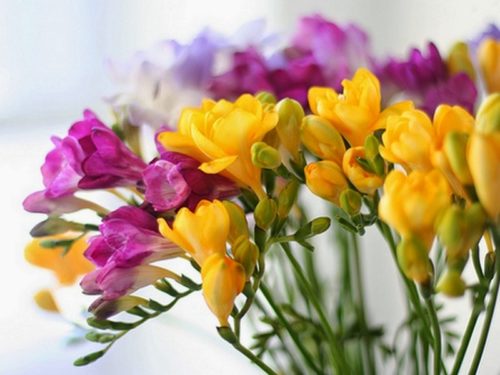
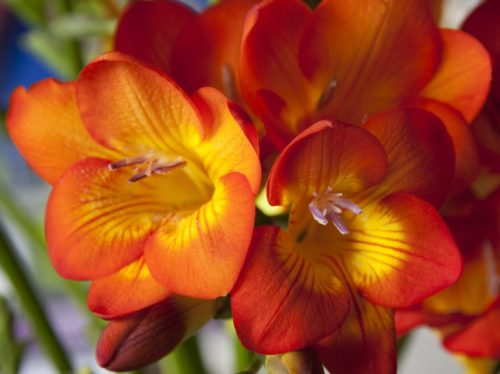
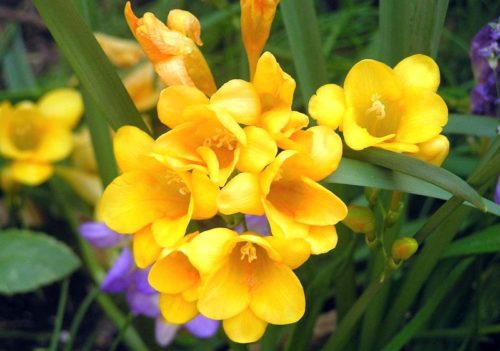
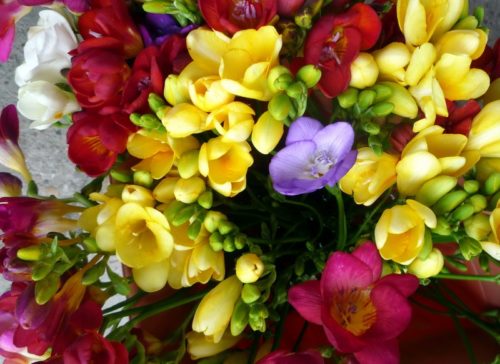

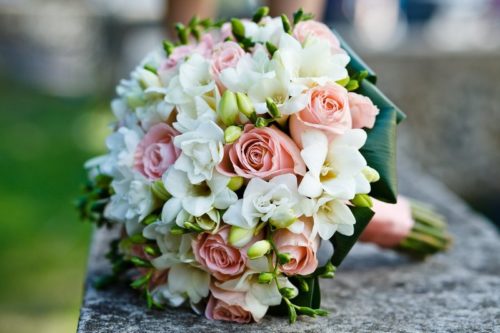
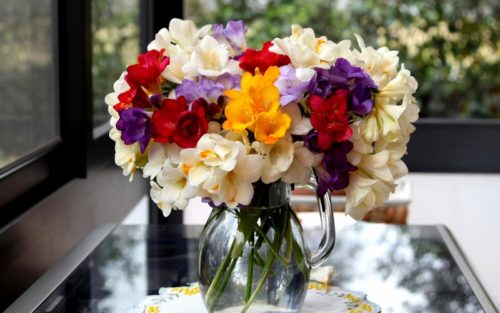
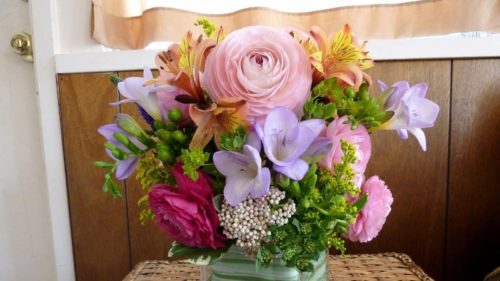
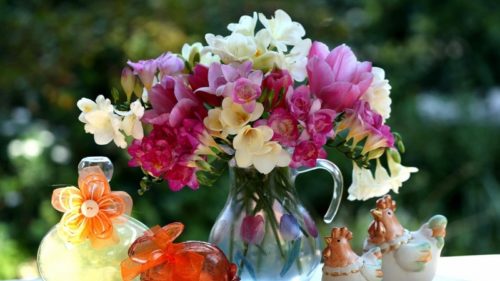

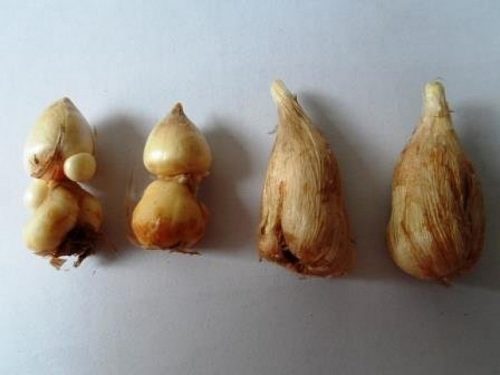
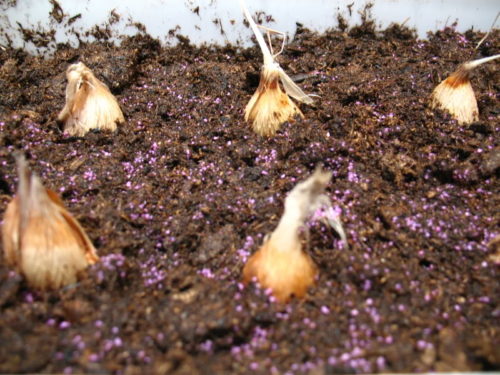
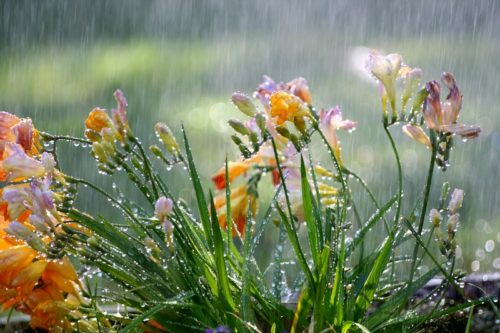
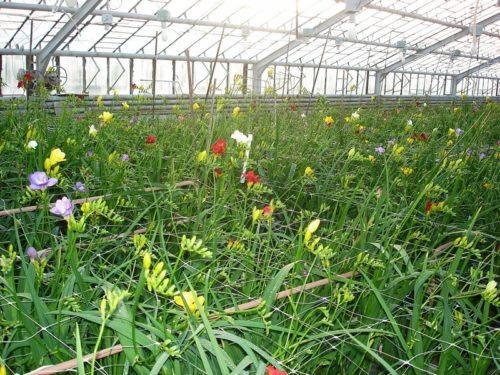
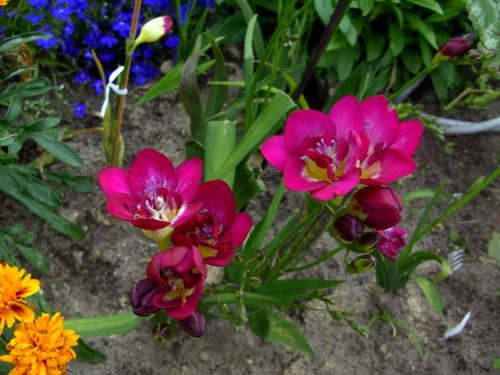
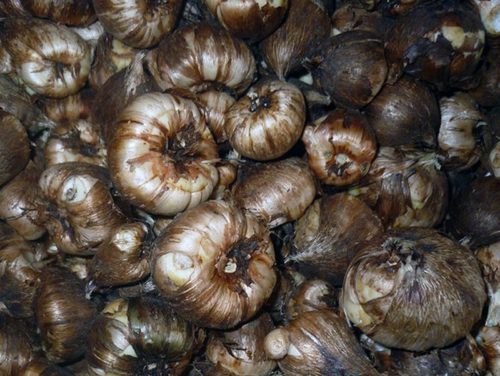
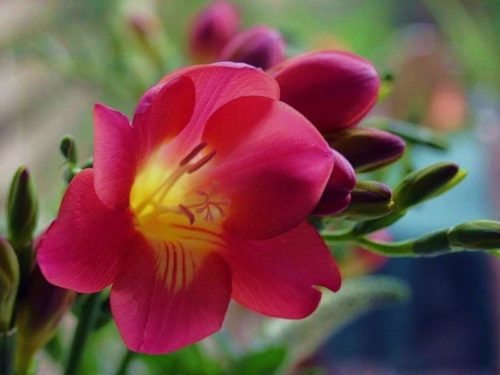












 Start a discussion ...
Start a discussion ...